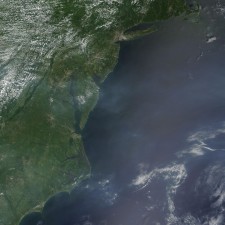Pollution and Hypoxia
All Drains Lead to the Ocean
Untreated sewage, agricultural runoff, and industrial chemicals—every day our coastal oceans face a massive influx of human-created refuse and byproducts. Given the incredible productivity of coastal oceans, it’s especially vital that we understand and mitigate the negative effects of our activities.
Coastal pollution can be sorted into three major categories—industrial, agricultural, and domestic.
- Industrial pollution can come directly from factories or from leaking septic systems, which are difficult to regulate and enforce.
- Agricultural pollution occurs when water from farms loaded with pesticides and fertilizers from farms flows down rivers and streams into oceans, where it can poison aquatic life or trigger harmful algal blooms.
- Domestic pollution from untreated sewage often finds its way into the sea during heavy rains when sewage treatment systems overflow, leading to dangerous levels of bacteria on beaches.
At MIT, we are at work on modeling and optimal observing systems that will allow us to understand and predict varied types of pollution events on multiple scales (hours to years, meters to hundreds of kilometers).
Key Questions We’re Exploring
- What are the long-term effects of present industrial, agricultural, and domestic activities on the world’s coastal oceans?
- What are the optimum responses to and mitigation strategies for coastal pollution?
- How can we best monitor, adapt to, and mitigate the increasing human pressures on our coastal oceans?
- What is the best way to provide new water resources to our highly populated coastal areas?







